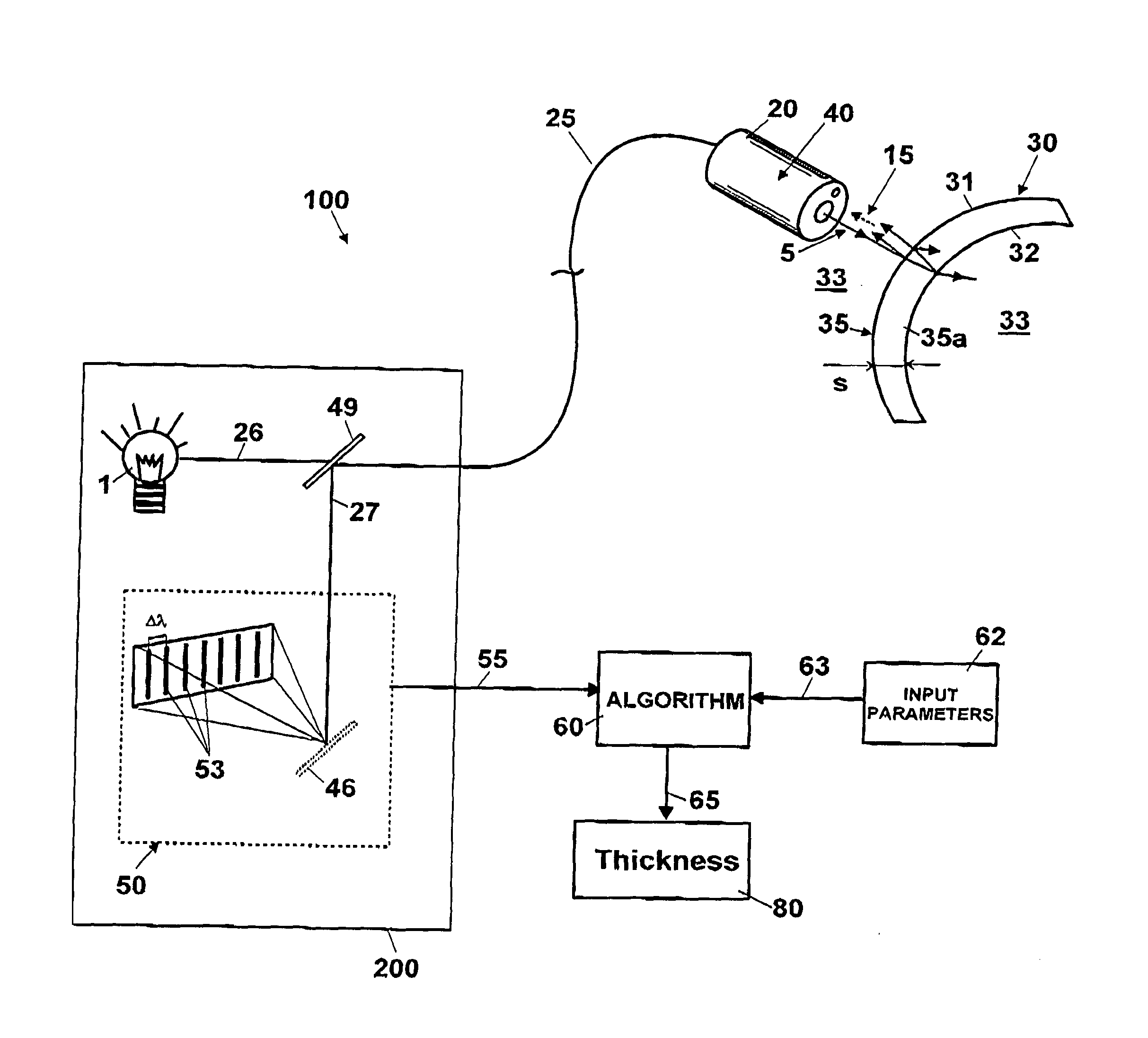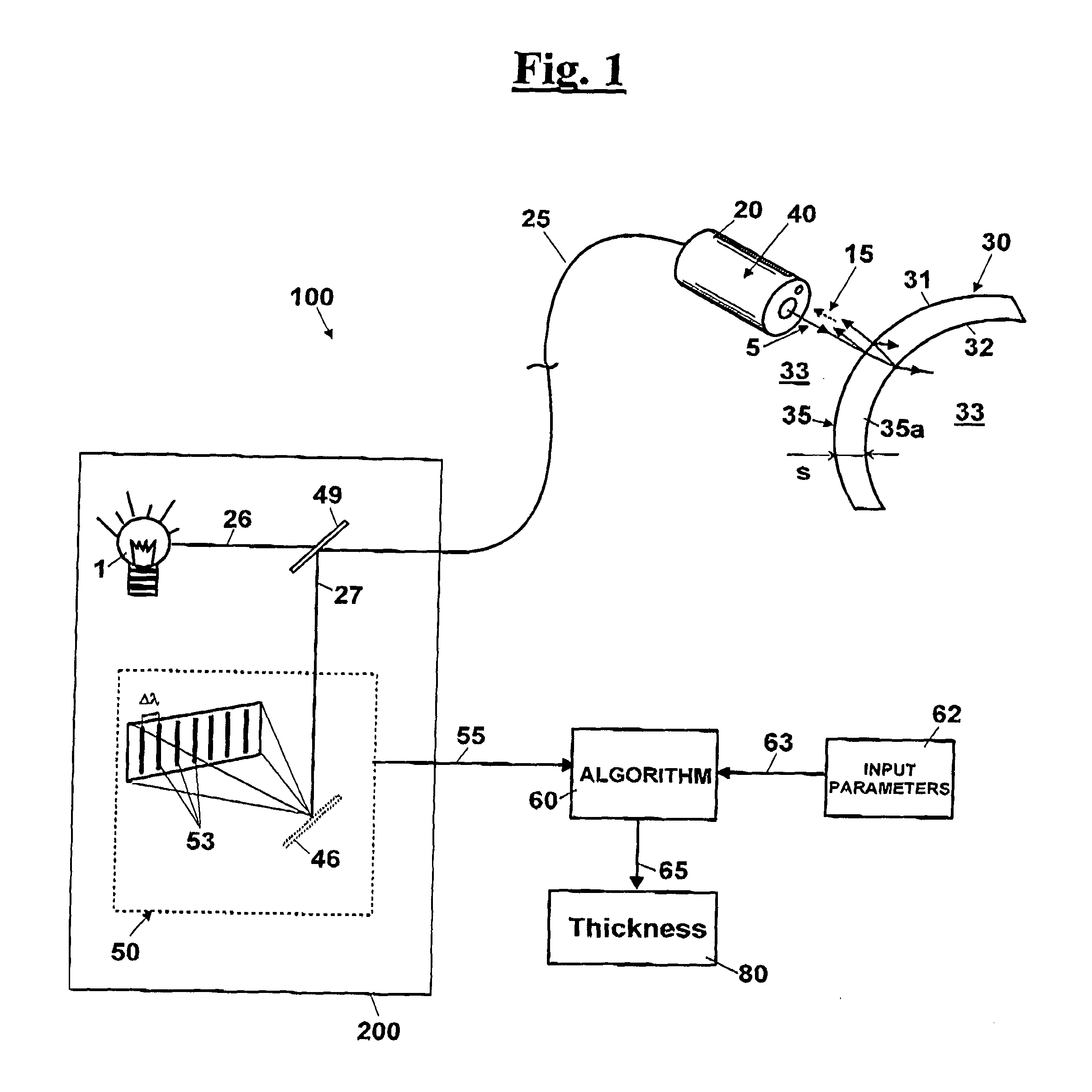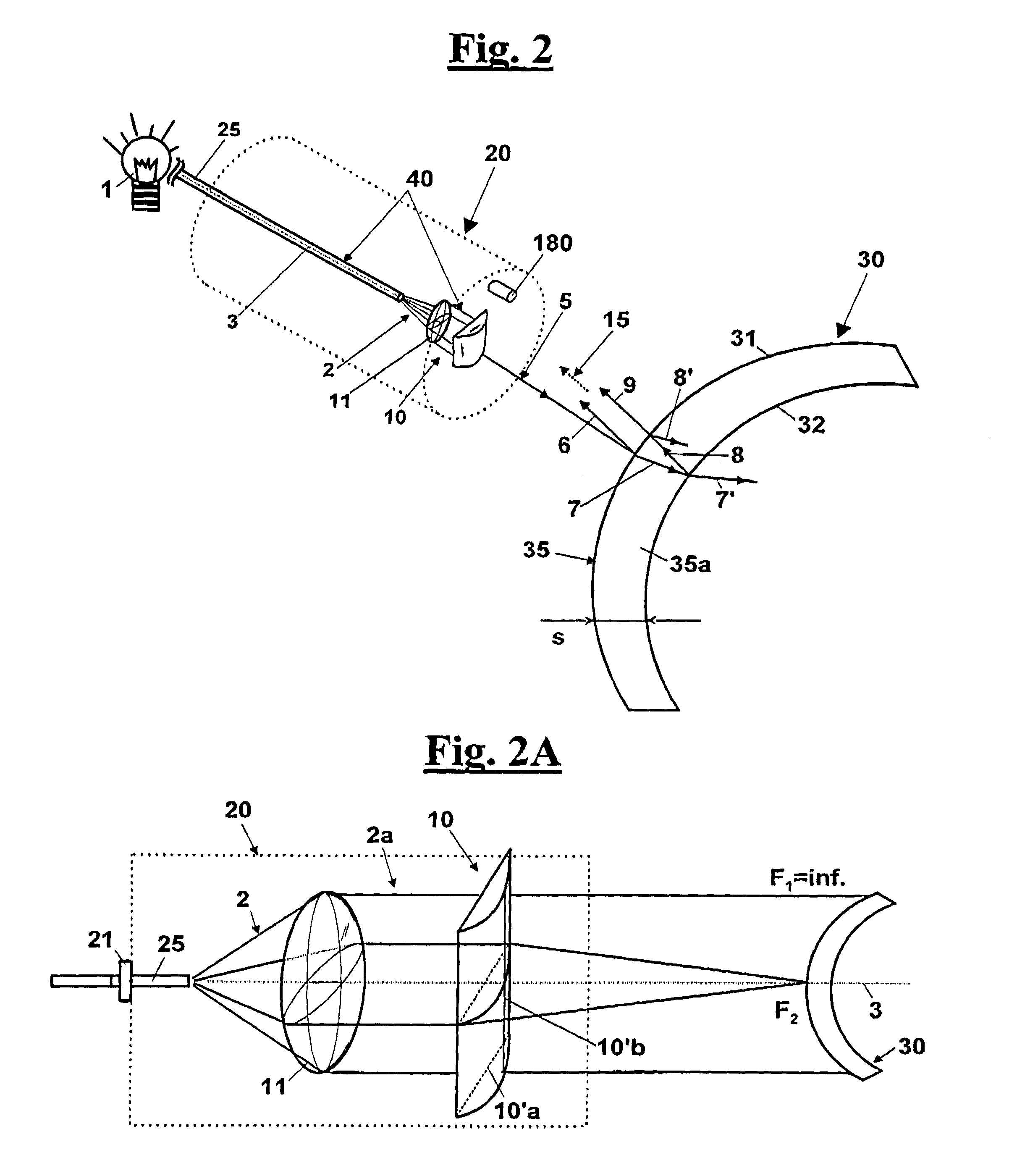Method and apparatus for measuring the thickness of a transparent object in an automatic production line
- Summary
- Abstract
- Description
- Claims
- Application Information
AI Technical Summary
Benefits of technology
Problems solved by technology
Method used
Image
Examples
Embodiment Construction
[0130]With reference to FIG. 1, a measuring apparatus is shown for determining the thickness 100 of a wall 35 of a generic transparent object 30, in particular a curved object, that is configured to provide a relative measuring method. In particular, wall 35 comprises a transparent material 35a arranged between a proximal interface 31, set between an environment 33 and transparent material 35a, and a distal interface 32, set between transparent material 35a and the environment 33.
[0131]More in particular, the measurement apparatus for determining the thickness 100 comprises a source 1 of a starting light radiation 2 in a predetermined source direction 3 and a means for focusing 10 (FIG. 2) starting light radiation 2, in order to obtain an entering light radiation 5 directed towards wall 35.
[0132]The source 1 is for example a superluminescent diode.
[0133]More in particular, starting light radiation 2 is transmitted through an optical fibre 25, in particular a single-mode optical fibr...
PUM
 Login to View More
Login to View More Abstract
Description
Claims
Application Information
 Login to View More
Login to View More - R&D
- Intellectual Property
- Life Sciences
- Materials
- Tech Scout
- Unparalleled Data Quality
- Higher Quality Content
- 60% Fewer Hallucinations
Browse by: Latest US Patents, China's latest patents, Technical Efficacy Thesaurus, Application Domain, Technology Topic, Popular Technical Reports.
© 2025 PatSnap. All rights reserved.Legal|Privacy policy|Modern Slavery Act Transparency Statement|Sitemap|About US| Contact US: help@patsnap.com



